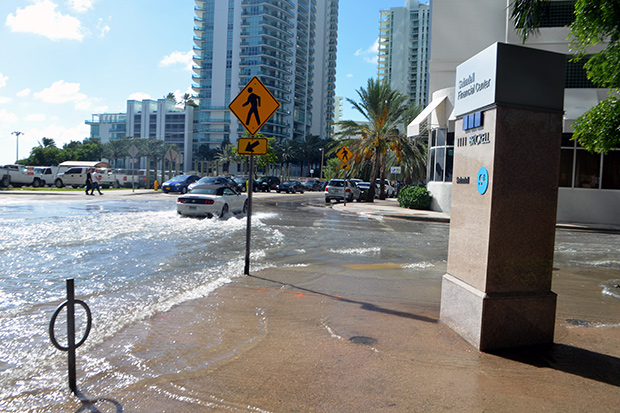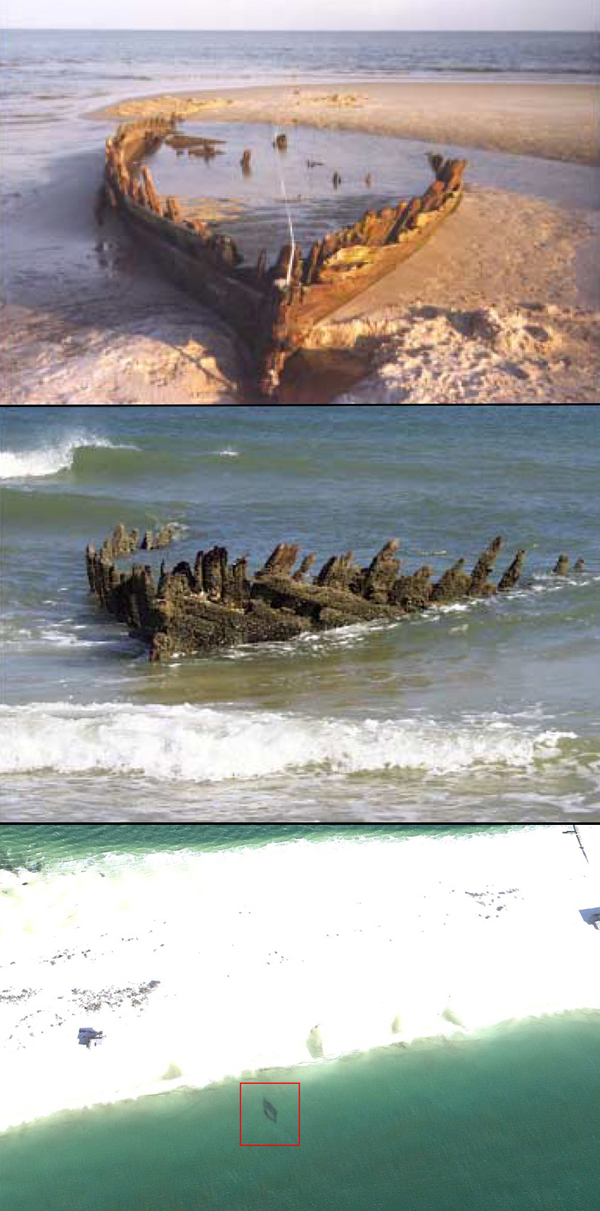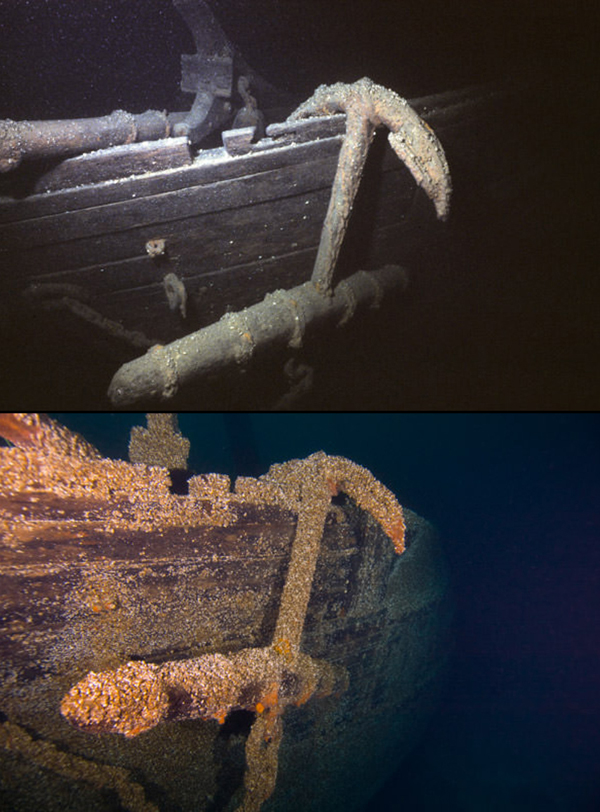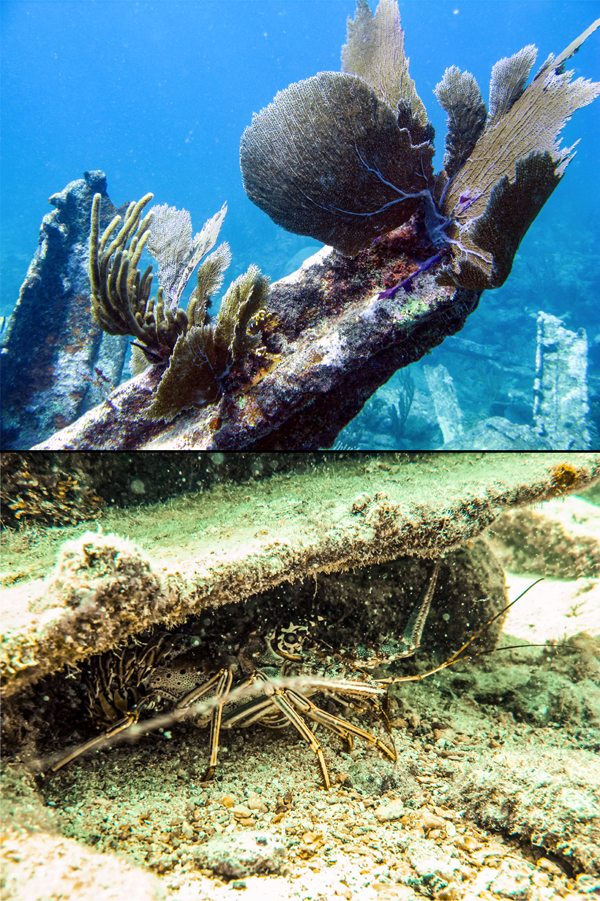Heritage (Professionals) at Risk
by William B Lees, PhD, RPA The University of West Florida’s Florida Public Archaeology Network…
By: Nicole Grinnan, M.A., RPA, Florida Public Archaeology Network
Very frequently, I talk to public audiences around the state of Florida about underwater archaeology. Topics range from how underwater archaeologists do their jobs to what kinds of sites are considered underwater archaeological heritage to whether or not underwater archaeologists regularly fend off sharks. Conversations often turn to the future of my discipline and, in discussing the kinds of difficulties that underwater archaeologists face as we work our way through the 21st century, I bring up climate change as one of the major hurdles with which all archaeologists will have to contend in one way or another. In Florida, climate change has been an important issue for decades. Impacts like sea level rise and erosion are often made visible on the landscape during high tides or after major hurricanes. Most public audiences are thus familiar with sea level rise and, inevitably, someone asks the question: “But underwater archaeology is already underwater…why do you need to worry about climate change?”

Sunny day tidal flooding on October,17 2016 at Brickell Bay Drive and 12th Street in downtown Miami. Photo by wikimedia user B137 via CC license.
While I can keep the mood light in responding that sea level rise is certainly good job security for me as an underwater archaeologist, the fact is that many people aren’t aware of the different facets of climate change as they regard the planet’s oceans, rivers, and lakes. Underwater archaeology is thus also affected in a variety of different ways, not just by sea level rise. While the tendency is to think of archaeological resources as dusty (or muddy) remnants of the human past distinct from the natural world around them, they are both created and buried within a biological environment. The latter is especially true for underwater archaeological sites: because marine life is often attracted to relief on the floor of oceans, rivers, or lakes, these sites become important artificial reefs that serve as a home to diverse ecosystems. Impacts to those ecosystems result in impacts to underwater heritage and vice versa.
So what do we know about climate change as it relates to our oceans? Based on a 2014 International Panel on Climate Change study that looked at years of archived tidal gauge data, we know that global sea levels rose approximately 7.5 inches between 1901 and 2010. Studies by the Australian Commonwealth Scientific and Industrial Research Organisation (CSIRO 2015) and the American National Oceanic and Atmospheric Administration (NOAA 2020) indicate a similar average increase in sea levels of 0.06 inches per year between 1880-2013. Global sea temperatures have also risen. NOAA estimates an average rise in temperature of 1.3°F between 1915-2015 based on historical data. This averages to an increase of about 0.13°F per decade (NOAA 2016).[1] Yet another changing factor is the pH of the world’s oceans. The ocean is one of planet Earth’s greatest regulators of carbon dioxide. Not only does carbon dioxide dissolve in water, phytoplankton living in oceans take in carbon dioxide during photosynthesis (much like forests do on land). With a planet that is roughly 71% covered in water, we rely on oceans to diminish carbon dioxide levels and provide oxygen. As carbon dioxide levels increase due to human activity, however, an imbalance has been created. Oceans now dissolve more carbon dioxide than previously, resulting in the increased production of carbon acid that then lowers the pH value of water. According to the International Panel on Climate Change (2014), the current pH of 8.2 in our oceans may continue to decrease by as much as 0.06-0.32 by 2100.[2]
It is important here to recognize two things: 1) these effects are not uniform around the globe, and 2) there are fluctuations in tidal and temperature maximums from year to year. Long-term plotted data, however, does point to upward trends in both sea levels, surface temperatures, and acidity. Predictions about the future change, but there is general agreement that sea level rise will affect 95% of the world’s oceans, altered temperatures will be felt even at significant depths, and increased acidity creates immense problems for many marine species.
As it relates to underwater archaeological sites, I’ve separated out climate impacts into three categories: 1) sea level rise and shoreline dynamics, 2) rising temperatures, and 3) ocean acidification. I’ll briefly discuss what each means and then provide some examples of effects based on a broad range of research. These explanations and examples are certainly not meant to be comprehensive, but rather an introduction to the issues. Additionally, distinguishing among these three categories is useful for helping explain some of what has underwater archaeologists concerned, but it is less useful for understanding the physics and chemistry of climate change forces in action. In reality, all of these impacts are tied to and affect one another in the larger scheme of climate change.
When underwater archaeologists talk about shoreline dynamics, they are typically referring to the many ways that shorelines change over time through erosion and sedimentation. Sometimes that change happens very quickly, like when a storm passes through; other times, that change can happen very slowly over time. Underwater archaeological sites along coastlines, whether fully submerged or in the intertidal zone, are subject to frequent episodes of becoming covered and uncovered. Shoreline erosion and sedimentation are natural processes, but climate change impacts frequently interrupt or speed up these processes through increased wave action, higher high tides, and larger, more severe storms. In some cases, a site’s environment may permanently change. The net effects of erosion and sedimentation on submerged or intertidal archaeological sites can be positive (e.g., a previously exposed site is now buried and protected from further degradation) or negative (e.g., a once-buried site is now exposed). One notable example of this kind of change can be seen on the sandy spit of Dog Island off Carrabelle, Florida. While barrier islands are subject to natural “turnover” (i.e., they change and move over time as sand moves around), the increased frequency and severity of hurricanes in the Gulf of Mexico has ignited this process on Dog Island). In 2018, after Hurricane Michael, several late 19th-century shipwrecks were uncovered as the island’s sand was pushed north. This change can also be seen in the changing environment of the alleged Priscilla shipwreck on Dog Island. As Dog Island shifts north, the wreck has moved out of the intertidal zone and into a fully submerged environment.

The alleged Priscilla in June 1987 at low tide (top), the alleged Priscilla in September 1995 at low tide (middle), and aerial photograph of the alleged Priscilla taken in January 2012 (bottom). Photo by Chuck Meide, James A. McClean, Edward Wiser, Dog Island Shipwreck Survey 1999:Report of Historical and Archaeological Investigations (Tallahassee, FL: Program in Underwater Archaeology, Florida State University, 1999), 31; USDA Farm Service Agency via Google Earth, 1 February 2012.
Another consideration for shoreline dynamics are shallow water ecosystems. The environments, which include coral reefs, seagrass meadows, kelp beds, and intertidal pools, are rich in marine life and are some of the most affected by sea level and temperature rise. Importantly, these species-rich environments can be stabilizers for underwater archaeological sites. As I mentioned earlier, shipwrecks and other archaeological sites become a part of the underwater environment when they are submerged. Archaeological sites thus often reach a form of equilibrium with their surroundings, protected by the life that flourishes on them. One interesting example of this is the HMS Fowey shipwreck located within the boundaries of Biscayne National Park in southeast Florida. An 18th-century British Man-of-War, HMS Fowey wrecked in what would become Biscayne National Park when she ran aground during an attempt to save a fellow British brigantine in 1748. In part due to human activities (like anchor dragging and vandalism) and in part due to the effects of natural disasters like hurricanes, the HMS Fowey site has experienced significant seagrass erosion since its rediscovery in 1980 (Lowerre 2014). This erosion over time has led to increased exposure of the site, making it even more susceptible to continued human and natural damage. Cultural resource managers with the National Park Service have attempted to restabilize the site by reburying it and/or planting seagrass to fend off erosion. With major hurricanes afflicting the area, however, these efforts have largely been unsuccessful (Wright et al. 2015). If climate change-driven storms escalate in severity and frequency, then the potential for preserving a site like HMS Fowey increasingly becomes a challenge for resource managers.
In tandem with changes to shorelines, rising temperatures in the world’s oceans, rivers, and lakes will likely also have impacts on the long-term preservation of underwater archaeological sites. Although the rate of temperature change in these bodies of water may seem relatively slow, underwater archaeological sites and their associated material culture have the potential to be significantly altered by changes in their environment. In an experimental study on the effects of temperature change on the presentation of various materials, North and Macleod (1987) indicated that the rate of corrosion of ferrous metals (e.g., iron and steel) nearly doubles for every 18°F change in temperature. While the rate of temperature rise is currently far less than that when we talk about climate change, this study indicates that ferrous materials may be subject to increased rates of degradation as a result of climate change. Similarly, as both sea and air temperatures rise, polar regions experience higher rates of ice melt and a subsequent decrease in what is called “winter hypoxia.” When temperatures are cold enough to produce or sustain winter ice, there can be a resulting lack of oxygen in surrounding waters. For archaeological sites around the poles, this lack of oxygen can lead to excellent site preservation. As winter hypoxia becomes rarer, however, sites in polar waters can deteriorate in ways to which they were not previously subject (Rahel and Olden 2008).
Apart from the direct effect of temperature rise on archaeological materials and their long-term preservation, it is also important to consider effects on marine life living on or around underwater sites. Increases in marine temperatures permanently alter existing ecosystems, encouraging species to either retreat to colder waters or spread into new, warmer environments. Researchers are seeing extended periods of reproduction in species like the wood-boring Teredo navalis and Lyrodus pedicellatus (commonly referred to as shipworms) as temperatures rise (Appelqvist and Havenhand 2016). These species can be detrimental to the ongoing preservation of wooden shipwrecks and other submerged wooden archaeological materials. There is also some evidence from Bournemouth University that a rise in marine temperatures have led to the northward migration of L. pedicellatus along the English coast (Palma 2014). In the American Great Lakes, invasive species like quagga (Dreissena bugensis) and zebra mussels (Dreissena polymorpha) have wreaked havoc on the marine ecosystem and submerged archaeological sites. As sites are colonized by these mussels, the sheer weight of their numbers can result in significant damage and even breakage of archaeological remains. While the degree to which climate change might affect these mussel species is somewhat uncertain, research suggests that warmer waters may provide a means for their spread (Kennedy 2012).

Invasive quagga mussels can threaten the archaeological integrity of shipwrecks. These photos of the Kyle Spangler show a shipwreck before and after a quagga mussel invasion. Photos by Stan Stock, 2003; NOAA, 2011.
The acidification of the world’s oceans is yet another climate change impact that has the potential to profoundly affect marine ecosystems. As we read earlier, oceans and the phytoplankton that dwell within them act as the largest filter for carbon dioxide on the planet. With carbon dioxide levels on the rise due to the continued use of fossil fuels, oceans are becoming oversaturated. What does that mean? The pH of ocean water is dropping, creating a more acidic environment.
As it relates to marine life, an increased concentration of carbon dioxide in the world’s oceans means a subsequent decrease in carbonate ion concentration. Calcium carbonate forms the basis for life for a variety of marine species, including corals, plankton, echinoderms, mollusks, and crustaceans. Apart from the fact that seafood dinners might look very different for us as ocean acidification intensifies, these kinds of marine life are also often the first kinds of life to colonize submerged cultural resources. In the waters around Florida, for example, shipwreck sites are often covered with corals and other invertebrate organisms that essentially create a protective barrier between archaeological remains and the open water. Without colonization by this kind of marine life, sites are subject to exposure and subsequent degradation (Oxley 1998). Interestingly, shipworms are also among the species that produce calcium carbonate. While we’ve noted that increased numbers and the spread of shipworms due to rising temperatures is problematic for wooden archaeological materials, ocean acidification may actually be a detriment to their long-term survivability (something that may actually be of benefit to some archaeological sites) (Spalding 2011).

Soft corals and invertebrates provide a protective barrier between corrosive salt water and the Lugano shipwreck in Florida’s Biscayne National Park (top). Lugano and other shipwrecks act as artificial reefs and provide a home for a variety of critical species, like this spiny lobster (bottom). Photos by author.
Like rising temperatures, increased acidification also has implications for rates of corrosion among certain kinds of archaeological materials. Cupreous metals like bronze and brass are highly sensitive to acids; these metals were frequently used in ship construction and fittings. Research also suggests that some ceramic glazes, particularly lead and tin glazes, will deteriorate more quickly in lower pH environments (Spalding 2011).
While it is sometimes difficult to talk about the effects of climate change without sounding like a harbinger of doom, the impacts and scenarios discussed here do not have to be inevitabilities. Climate change has affected archaeological sites, yes, but it is well within our collective power to mitigate, slow down, or even stop these impacts completely. One of the ways to mitigate the effects of climate change on sites is through what has been termed “archaeological triage:” inventorying sites at risk, prioritizing research at sites that are most in peril of being lost, and monitoring sites in the long term to better frame and contextualize the effects of climate change. In addition to considering a triage approach, underwater archaeologists can also mitigate impacts by continuing to pursue interdisciplinary work that might include climate-focused data analysis, site degradation studies, potentials for site stabilization, identifying the relationships between natural resources and maritime communities in lieu of change, and the development of climate change citizen science initiatives. Slowing down or stopping the impacts of climate change is commitment that humanity at large must make. It is up to each and every one of us (archaeologist or not) to draw attention to the issues, engage in continuing education, and vote in ways that reflect our concerns. Not only can we ensure the protection and preservation of archaeological resources in this way, we can also help safeguard the health of our planetary home.
[1] While this change seems relatively small, I have found it useful to think about our oceans like we think about the human body. For example, I feel very differently with a normal temperature of 98.6F than I do with a borderline fever temperature of 99.6F.
[2] Like rising temperatures, this doesn’t seem like a big change; we must consider, however, that incremental changes in pH can have devasting effects. For example, think about the characteristics of lemon juice (pH of 2) versus those of battery acid (pH of 1). While there is a difference of just one pH between them, our bodies can much more readily digest the former over the latter! The same is true for the world’s oceans.
Appelqvist, Christin and Jonathan N Havenhand.
2016 A phenological shift in the time of recruitment of the shipworm, Teredo navalis L., mirrors marine climate change. Ecology and evolution 6(12):3862-3870.
Commonwealth Scientific and Industrial Research Organisation
2015 Update to data originally published in Church, J.A. and N.J. White. 2011. Sea-level rise from the late 19th to the early 21st century. Surveys in Geophysics 32:585-602.
Etters, Karl
Shipwrecks on Dog Island in 1899 unearthed by Hurricane Michael. Tallahassee Democrat 20 October. Tallahassee, FL. <https://www.tallahassee.com/story/news/2018/10/20/ships-wreck-dog-island-1899-unearthed-hurricane-michael/1697720002/> Accessed September 2020.
Intergovernmental Panel on Climate Change
2014 Climate change 2014: synthesis report. Pachauri, RK and LA Meyer, editors. Contribution of working groups I, II and III to the fifth assessment report of the intergovernmental panel on climate change. IPCC, Geneva.
Kennedy, Caitlin
Fending Off Invaders in a Warmer Climate. Climate.gov <https://www.climate.gov/news-features/featured-images/fending-invaders-warmer-climate> . Accessed September 2020.
Lowerre, Cornelia L.K.
2014 A Submerged Cultural Resources Site Report: HMS Fowey. Master’s thesis, University of Miami, Miami, FL.
Meide, Chuck, James A. McClean, and Edward Wiser
1999 Dog Island Shipwreck Survey 1999: Report of Historical and Archaeological Investigations. Florida State University, Program in Underwater Archaeology, Tallahassee, FL.
National Oceanic and Atmospheric Administration
2020 Laboratory for Satellite Altimetry. Sea level rise. <https://www.star.nesdis.noaa.gov/socd/lsa/SeaLevelRise/LSA_SLR_timeseries_global.php> Accessed September 2020.
National Oceanic and Atmospheric Administration
2016 Extended reconstructed sea surface temperature (ERSST.v4). National Centers for Environmental Information. <www.ncdc.noaa.gov/data-access/marineocean-data/extended-reconstructed-sea-surface-temperature-ersst> Accessed March 2016.
North N.A. and I.D. Macleod
1987 Corrosion of metals. In: Conservation of Marine Archaeological Objects, Colin Pearson, editor, pp.68-98. Butterworths, London.
Oxley, Ian
1998 The environment of historic shipwreck sites: a review of the preservation of materials, site formation and site environmental assessment. Master’s thesis, University of St. Andrews, Scotland.
Palma, P.
2014 A Desk-based Assessment to Compile Baseline Information on Recorded Presence of the Shipworms Teredo navalis and Lyrodus pedicellatus in English Waters. Unpublished report for English Heritage, ref. 6804.
Rahel, Frank J. and Julian D. Olden
Assessing the effects of climate change on aquatic invasive species. Conservation Biology 22(3):521–533.
Spalding, M.J.
2011 Perverse sea change: underwater cultural heritage in the ocean is facing chemical and physical changes. Cultural and heritage arts review, pp 12–16. The Ocean Foundation, Washington, DC.
Wright, Jeneva, Joshua Marano, and Bert Ho
2015 HMS Fowey 2014 Stabilization Project Report. Manuscript, National Park Service, Biscayne National Park, Homestead, Florida.